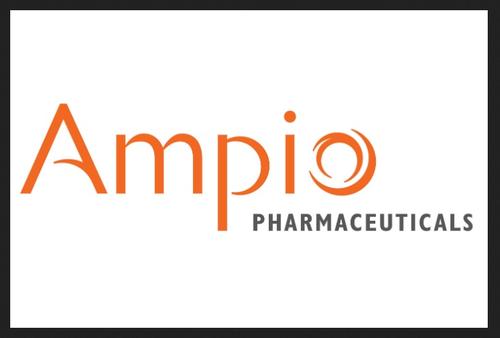In their latest tour, the legendary music band U2 is using amazing gadgetry of a double-sided screen to immerse themselves fully with fans during concerts. It was seen at the SAP Arena, their second stop on their 2015 Innocence & Experience tour, which took place the evening of May 19.
On these two screens are huge animations, which show colorful images to the audience. The screen, which bisects the roaring fans, creates a surreal effect. The band performs between the 1’s and 0’s of the screen, in the gap between the animations. It’s a visual powerhouse of technology, pop-art, and music.
Carrie Rosen
The legendary hotel chain Hyatt Hotels are branching out into home rentals by investing in a startup called onefinestay. The startup specializes in providing a platform for people to rent private luxury homes. For Hyatt Hotels Corp., this investment marks a way to fulfill the needs of consumers who would rather rent a home than stay in a hotel room. It is rare to see a hotel operator pairing with a home rental company.
Xiamomi, a leading smartphone manufacturer in China, will soon sell its affordable accessories to the US, as well as to UK, Germany, and France. Previously it did not offer its products to any of these countries.
The new efforts are a test to see what the audience is response is before Xiaomi decides whether to sell its smartphones to the west. The accessories for sale will include headphones, portable battery packs, and fitness wristbands. All of these types of products very popular right now in the US.
Ampio Pharmaceuticals (AMPE) shares sunk Monday to their lowest level in 2.5 years after the biopharmaceutical company said its multiple-injection STRIDE study AP008 failed to reach its primary endpoint against the saline control even though there was a statistically significant reduction in pain compared with baseline for patients receiving Ampion. AMPE was down 61% at $3.10 in recent trading shortly after the open. It hit an intraday low so far of $3, its lowest level since September 2012; the stock’s previous 52-week low was $3.19.
Ampio had launched the Phase III program for Ampion, a low molecular weight filtrate of a Food and Drug Administration-approved biologic, to treat pain due to osteoarthritis of the knee. Each patient received three 4ml intra-articular injections of Ampion or the saline placebo, one at baseline, the second at two weeks and the third at four weeks. The company noted in osteoarthritis, saline is known to be a partial therapeutic and not a true placebo, but has been the control used in all published osteoarthritis drug trials.
In the STRIDE study, the saline control arm varied well out of a normal range when compared with previous Ampion studies and from the published results for other osteoarthritis drugs.
“Once we have had more time to analyze the STRIDE data, we will host a conference call to present our findings and answer questions from our shareholders,” the company said, adding it will meet with the FDA “as soon as practical.”
Advaxis shares hit an all-time high of $14.44 earlier after data from a phase 1/2 clinical study of its ADXS-HPV in 10 patients with HPV-associated locally advanced anal cancer showed that all patients who completed treatment in the study had a complete response with no evidence of recurrence to date.
ADXS was most recently higher 14% at $14.15. The 52-week low is at $2.46. Average daily volume is 1.5 million shares. Earlier in the trading session shares hit $14.44, setting an all new high.
The preliminary data also showed the treatment was well tolerated and all treatment-related toxicities were within 24 hours of dosing, the most frequent of which included chills/rigors, fever and nausea, the company said.
“Though preliminary, the data we have observed thus far are extremely encouraging,” said Kimberly Perez, assistant professor of medicine at the Alpert Medical School, Brown University. “ADXS-HPV has the potential to be an important advancement in the treatment of HPV-associated anal cancer, and we look forward to reporting the full safety and efficacy data set once all 25 patients have completed the dosing regimen.”
Neuralstem shares rose Monday after the stem-cell development company reported a 2014 loss that matched analysts’ expectations while its revenue for the year was above the Street view.
Shares of CUR were up 7.4% at $2.75 in recent trading shortly after the open, in a 52-week range of $2.12 to $4.81.
The company reported a net loss of approximately $22.6 million, or $0.26 per share, for 2014, compared with a loss of approximately $19.8 million, or $0.27 per share, in 2013. The per-share comparison was skewed by a 20% jump in the number of shares outstanding. Two analysts polled by Capital IQ had expected a GAAP loss of $0.26 per share, on average.
The company’s operating loss was approximately $17.4 million, compared with a loss of approximately $12.5 million in the previous year. The widening of the operating loss was primarily attributable to an increase of approximately $3.7 million in general-and-administrative expenses coupled with an increase of approximately $1.0 million in research-and-development expenses.
Total revenue plunged to $18,833 for 2014 from $110,000 in the previous year, but was above three analysts’ average expectation for about $10,000 in revenue.
“In 2015, we plan to begin clinical development of our NSI-189 small molecule drug in a second indication for the treatment of cognitive deficit from schizophrenia, and we plan to initiate a Phase II clinical trial for the ongoing development program for the treatment of major depressive disorder (MDD),” said CEO Richard Garr. “The cell-therapy programs in amyotrophic lateral sclerosis (ALS), chronic spinal cord injury (cSCI) and stroke will also move forward.”



